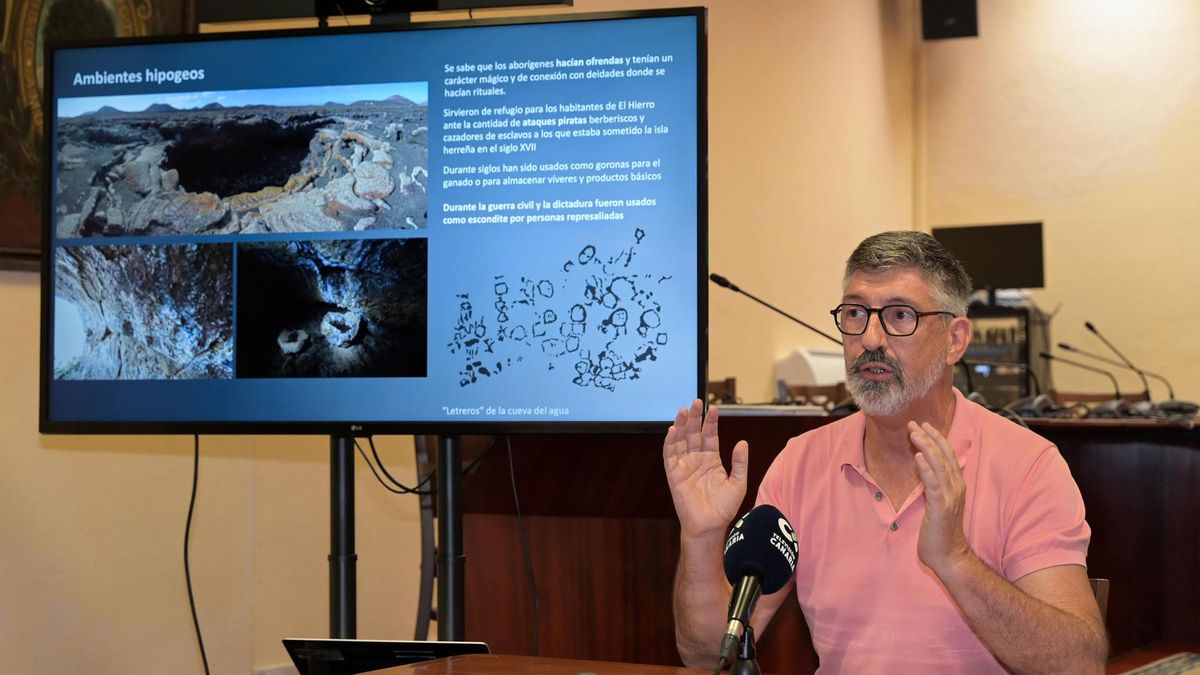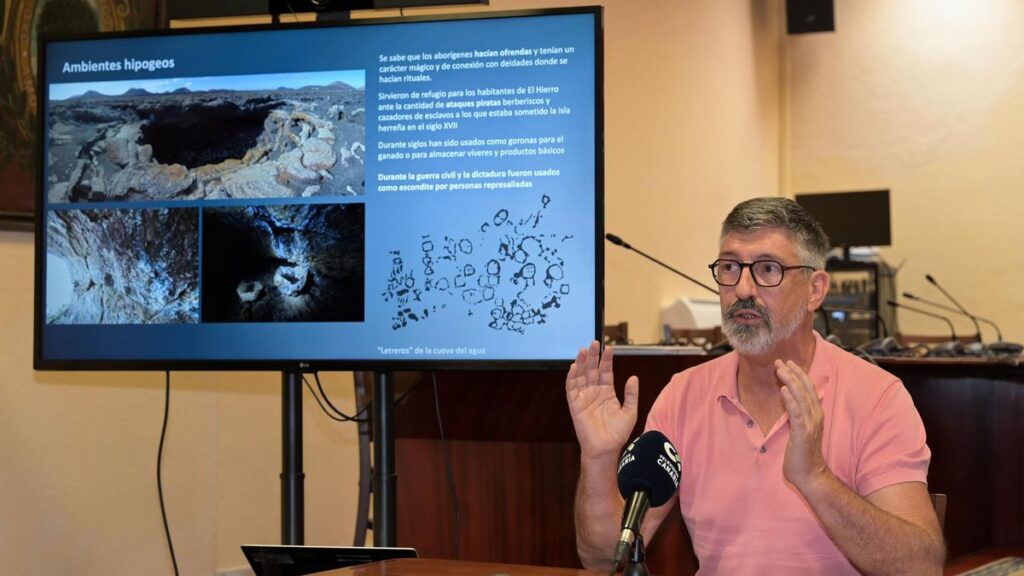A Scientific Breakthrough in the Island’s Depths
A research project by the University of Las Palmas de Gran Canaria (ULPGC), in collaboration with the El Hierro Biosphere Reserve and Geopark, has led to the exciting discovery of four new species of endemic algae. These unique life forms were found thriving in various volcanic tubes across the island. In a beautiful nod to local culture, the researchers will propose that one of these species bears the name of a revered figure from Herreño folklore, Valentina la de Sabinosa.
Presenting a Unique Study
The findings were presented this Monday by the President of the El Hierro Island Council, Alpidio Armas; the manager of the Biosphere Reserve and Geopark, Yurena Pérez; and Dr. Emilio Soler from the ULPGC’s Canary Islands Observatory of Harmful Algae (Group EOMAR Ecoaqua). The study, conducted over the last year and a half, focused on 9 of the 102 volcanic tubes and caves that honeycomb the island. President Armas described it as “a unique study in the world that once again highlights our rich geological and natural heritage—in this case, the part least visible on the surface, inside volcanic cavities that are also part of our history and cultural heritage, linked to pastoralism and the aftermath of the Civil War on our island.”
A Call for Protection and Conservation
Armas emphasized the need to implement island-level protection measures for these caves and volcanic tubes, given their immense scientific and cultural value, and thanked the research team for their work. Dr. Soler from the ULPGC explained that El Hierro has the highest density of volcanic tubes per square kilometer in the world. “The advantage of El Hierro,” he noted, “is that being such a high island relative to its surface area, we can study tubes at different altitudes—from 1,300 meters down to 100 meters—and with different orientations, exposed to or sheltered from the trade winds, with humidity and without. This has allowed us to make comparisons between them. I believe this is the first study of its kind in the world, comparing multiple volcanic tubes in a single location.”
Discoveries in Extreme Environments
This pioneering research detected 35 species of aerophytic diatoms (algae that grow in extreme environments) from 30 different genera. Remarkably, four of these species have never been described before. “They are new to science and so specific that they don’t grow in every tube; therefore, we are talking about possible Canarian or even Herreño endemics,” stated the scientist. He further revealed that these species are “paleoclimatic relics,” making a passionate plea for their conservation against the threats of climate change and human activity, “so we don’t lose a significant part of a diversity that remains invisible to our eyes.”
Names Rooted in Herreño Culture
According to Soler, the four newly discovered species will be given names deeply connected to the island’s top-tier cultural aspects. This is a tribute to figures like Valentina “la de Sabinosa,” a icon of Herreño folk music, and the island’s primary ancient name, Ezeró. Other names will relate to the algae’s morphology, such as Corniculata or Vulcana. The four definitive names will be officially published in scientific journals to cement their place in the scientific record.


